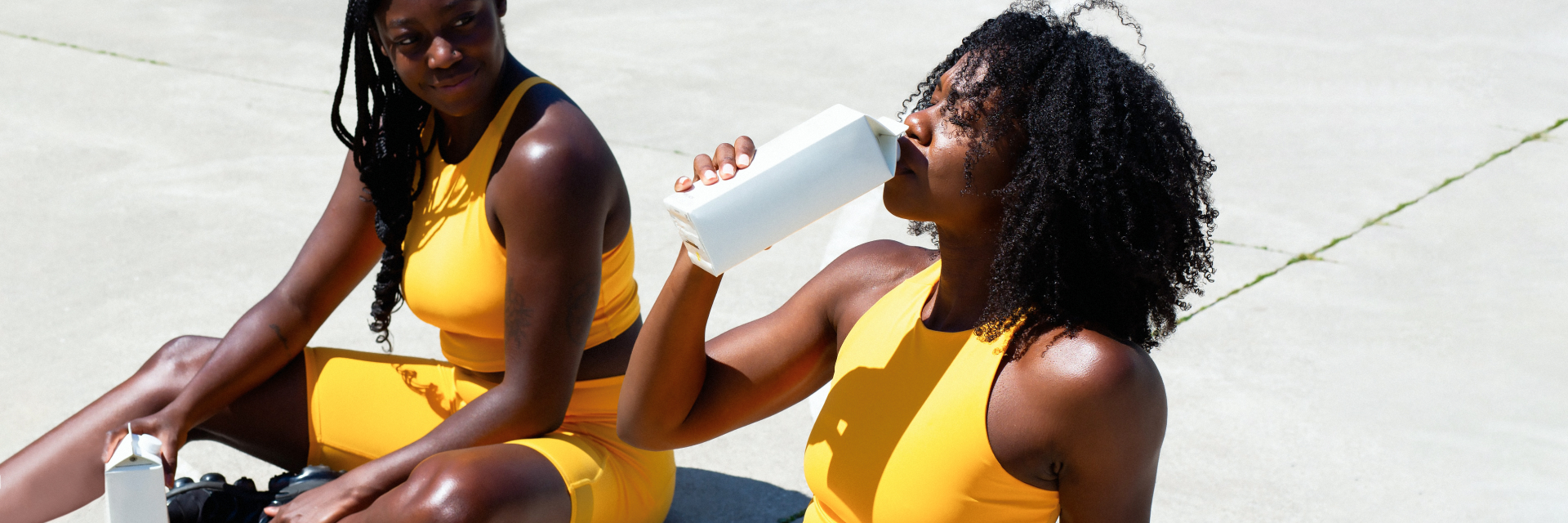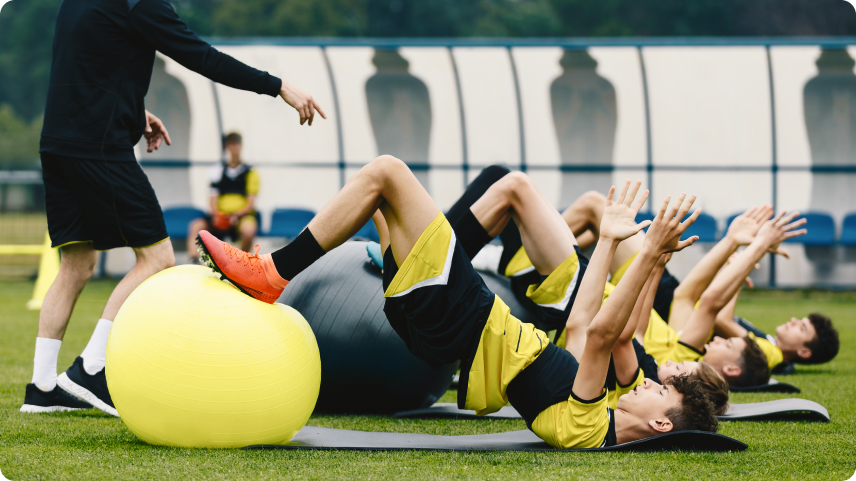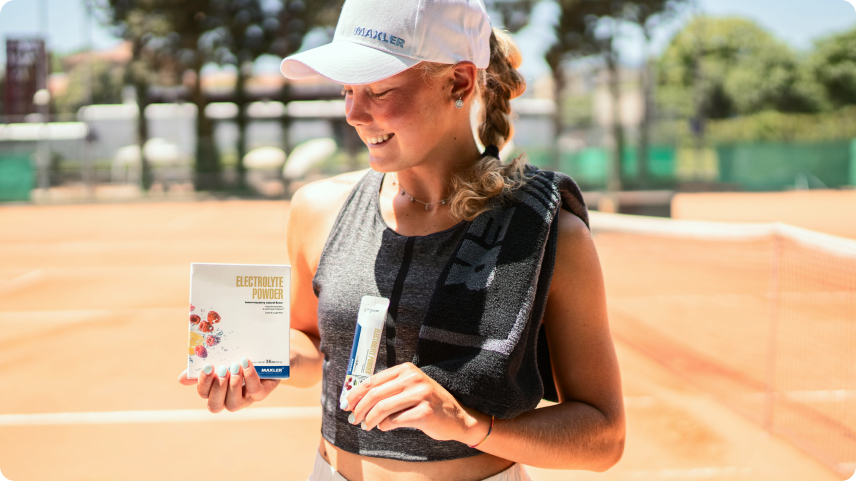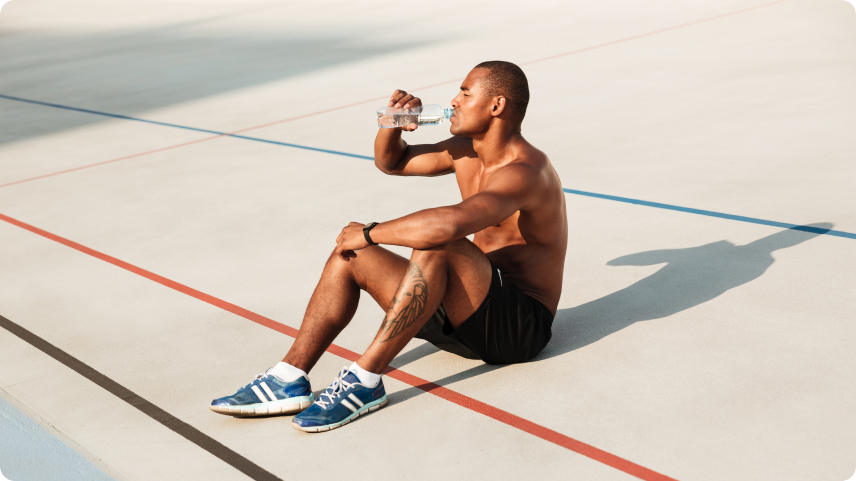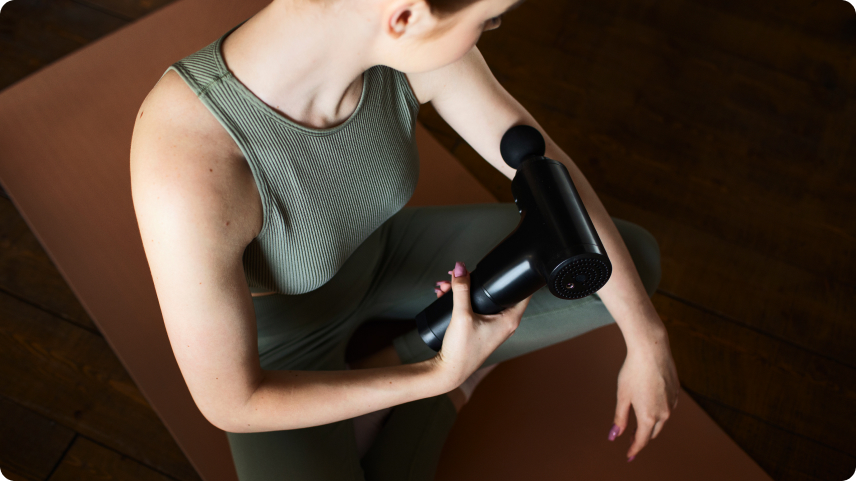Do you ever wonder what recovery days are for? Are they really needed by the body or are they another one of those things that will just prolong your journey towards your goals? Your habits related to recovery can truly make or break the path towards the body of your dreams. So, why bother with it and what can you do to support your body after the workouts?
How to speed up muscle recovery
Recovering after exercise can have you doing all sorts of things that might or might not help. If you’re wanting to save yourself the trouble of trying every recovery hack after a workout, it’s key to understand what you need to focus on. From getting the nutrition right after a workout to understanding how to manage discomfort and decrease it, the basics of recovery are in this post.
Before we start, it’s important to highlight a few things. Some recovery methods might not suit everyone, so you might have to play around until you find something that works. Another important aspect to maintain in the back of your mind is your connection to your body. Only you know what feels odd or strange, and if you experience feelings of discomfort after the workout that you’ve not felt before or if something doesn’t quite feel right, consult with a medical practitioner. That way, you can catch out any underlying injury and prevent further damage to yourself.
You can support the after-workout recovery process through a variety of strategies, from nutritional to physical. Read on to find out more.
Diet
Unsurprisingly, what you consume day to day does affect your recovery sessions. Your nutrition can support the recovery processes, so it’s essential to kickstart it straight after your workout. How can you support yourself using nutritional approaches?
There are three essential rules to guide your food consumption post-workout:
- Protein priority – ensure you’re consuming a solid portion of muscle-building macronutrient, aiming to get 15-20 grams
- Carbs should be consumed – add high-quality energy source to support resynthesis of your glycogen in the muscle
- Hydrate and rehydrate – water losses need to be replenished, so ensure to take in fluids that are absorbed quickly
There’s a reason for these macros to be the ones you require. During your exercise, you would have used up your stored fuel, which is typically the glycogen that’s found in the muscles of your body. The energy-containing molecule is made from sugars, that your body preferentially gets from carbohydrate sources. Therefore, eating foods containing this macro can help you replenish your original stores.
Then comes the point of protein. The workout has put stress on the muscles, leading to a certain level of breakage. To restore them, you need the “Lego blocks” that build the fibers and support muscle repair. That’s where protein comes in. The macro helps provide the blocks and favors the repair process. All of this positively affects your recovery efforts.
How can you put that into practice? When packing your gym or training bag, don’t forget to put in a snack box for when future you finishes your workout. Pack something you’re likely to be able to consume within a few hours after the session. If you know you’re not a big fan of solid foods post-workout, grab an extra bottle of electrolyte drink and a chocolate milk. Alternatively, pair a protein shake with a sports drink as you sip on it while you recover or head home after the session.
If you can handle some solid food, you can combine fluids with them. A protein shake along with some crackers might be a good idea. Alternatively, grab a sandwich and a bottle of sports drink.
Hydrate
Time to better understand hydration. Why is it so important for you to ensure that water levels in the body are replenished?
Hydration plays a role in many processes related to your performance and wellbeing:
- It assists your temperature control
- It impacts your mood and can affect how you react to things
- It is required for your energy release processes
Especially in the case of long workouts or if you’re training under hash environmental conditions, you will likely lose quite a bit of water. After your workout ends, it’s imperative to replenish this important nutrient. It’s a good idea to drink around half a liter straight after training. For best absorption, upgrade your water. Your water should contain sufficient minerals or carbohydrate to make it isotonic. This supports absorption and you’ll rehydrate faster this way. Consider something like electrolyte powder to help you with it – Maxler Electrolyte Powder is a good solution for your requirements.
Keep moving
When you’re trying to restore yourself after a grueling workout, especially if you’re feeling quite sore in the muscles, movement may seem counterintuitive. However, it’s a fantastic way to support the muscle repair. It’s termed active recovery, and it can truly make a difference.
Choose a type of movement that’s not too intense and that you enjoy. It can be a range of things, including:
- Water-based activities like swimming
- Outside activities like jogging or a light cycle
- Your daily movements like walking
- Even a stretchy movement like yoga or tai chi
The most important aspect is maintaining a low intensity. You want to move the muscles, but you don’t want to further damage them. The way that this movement supports the purpose is through improving the flow of your blood, which assists in eliminating waste and buildup of lactic acid. Additionally, it can benefit those who tend to get quite sore after their workout, even though the movement might feel hard at the start.
For best results, incorporate this technique into your workout, as part of finishing your cool down.
Rest and Relax
Sometimes, you just need some rest. And that’s a perfectly acceptable way to spend a recovery day that follows a workout. During this time, ensure that you’re sticking to a balanced nutritional approach and helping your body get the right nutrients for recovery. Additionally, it’s a great idea to avoid exercise if you’ve injured yourself or overtrained in your workout.
Overtraining is an important thing to watch out for, as it affects your progress. The American Council on Exercise offers the following things to watch out for to determine if you’ve trained too much:
- You might have pain in the muscles
- You might struggle with workout completion
- A feeling of fatigue might persist
- Watch out for frequent injury or sickness
- Your moods can change
- You might want particular foods for no reason
If you want to learn more about the importance of resting, check out our post on the importance of rest days.
Get a Massage
If you’re prone to feeling sore after your workout, massage can be a fantastic way to support recovery. There are multiple ways to go about it. You can have it done to you, should you have access to it through your training programs. However, many will have to rely on themselves to do so.
Did you know that doing a massage quickly after a workout can decrease the uncomfortable feeling 48 hours after? Self-massage is a great strategy to promote blood flow and decrease inflammation in the area, which helps it take away discomfort. You can use your hands if you can reach the sore muscle. Explore different techniques, such as the kneading petrissage or the gliding effleurage to help you work out what works best for what muscle.
Alternatively, use rollers, such as foam rollers. Don’t go overboard, but do a thorough job – about 10-20 minutes should be enough to lower soreness after a workout.
Ice Baths
If you find being in the water relaxing and calming, you might enjoy cold water immersion or ice baths. Why might this be a good idea after a workout?
There are a few reasons that are thought to be responsible for the beneficial effect, which include:
- Better clearance of waste like lactic acid from the muscles
- Cold may slow down processes in the cells
- The temperature can help lower swelling
- It may have a psychological effect as well
You might wonder whether you actually need to jump in a tub of ice to do that. If you don’t have access to something like that, you can simply use a shower or a bathtub. Use water that’s around 10-15 ℃ and use it for a short time, like 10 minutes. Alternatively, a cold shower can work as well.
Do make sure to consult with a coach or check in with your physician before starting to use this technique. They’ll be able to advise on best practices. Stay vigilant and always have someone there if you’re doing a cold immersion in case you need support.
Contrast Water Therapy
If the cold on its own isn’t quite your style, perhaps you’ll benefit from a mixed approach. It can benefit you by improving blood flow, lowering inflammation and can even support the range of your muscle’s motion after your workout. There’s still a lack of understanding on how exactly it works on the molecular level, but it can make a difference to an athlete’s recovery.
What exactly does it entail? You’ll usually need two large containers which you can fit in, with one being filled with cold water and the other with warm water. Your temperatures should be 10-15 ℃ for the cold water and 35-45 ℃ for the other one. You’ll need to start with cold water and then get into the other tub. Stay in each part for up to three minutes and switch for a period of 20 minutes in total.
Alternatively, try doing it in your shower after a workout by going from hot to cold periodically. Apply the same principle – switch temperatures every 3 minutes for a continuous time of 20 minutes.
As always, before starting anything new, consult with a coach or doctor and they’ll be able to help you understand whether this technique is safe for you.
BCAAs
Time to talk about the benefit of supplements in your recovery plans after exercise. While protein can be an easy yes in your mind, amino acids on their own can also be a good idea. There’s a group of aminos that is especially beneficial after a hard workout, as they’re known to support recovery. How do they do that?
These aminos function in a few different ways, including:
- Slowing down the breakdown of the muscle
- Lowering damage during workouts
- Lowering your soreness perception
- Decreasing tiredness
The best thing about adding these aminos to your routine is that you can take them at any point in the workout. They make an excellent pre-workout, and can be taken during and after your training session. Simply pop them into your shaker and sip on them as you rehydrate.
Remember to choose your BCAAs wisely – look for supplements that are high quality and adhere to a high standard. Alongside that, consider supplements that suit your dietary needs, such as vegan BCAAs. Choose transparency and effective dosage.
Multivitamins
In addition to the methods introduced before, there’s another aspect of your nutrition that may make a difference, and that is micronutrients. Intaking sufficient quantities of them is key for overall great health and performance, however certain nutrients can help you take care of your body after a hard workout.
- Vitamin D. An important vitamin, it can play a key role in your performance, especially if you’re already low in it. It may support the adaptive processes of muscle to new exercise loads during your workout. Another beneficial property is that it supports bone health, which may decrease issues with that aspect of your health and performance.
- Vitamin C. This vitamin plays a supporting role in collagen making, so it can help with taking care of your cartilage and pain in these areas.
- Omega-3s. These fats usually come from fish or plant sources, and they’re an overall health booster. For athletes, they hold promise in helping with recovery processes, especially if you feel soreness or are prone to DOMS.
The easiest way to get all of these nutrients at once is typically through a supplement, such as a multivitamin that’s enriched with the fatty acids. This can be an easy way to look after yourself and support post workout processes.
Recovery is not something to be taken lightly, as it’s a vital process that assists your journey to your athletic goals. Therefore, it’s important to understand how to support your body in this process after a workout. A good plan is to optimize nutrition and make sure you use supplements to your advantage. Additionally, many techniques like massage or active recovery can support your process. Learning to recover properly will help you progress in your athletic journey better.
